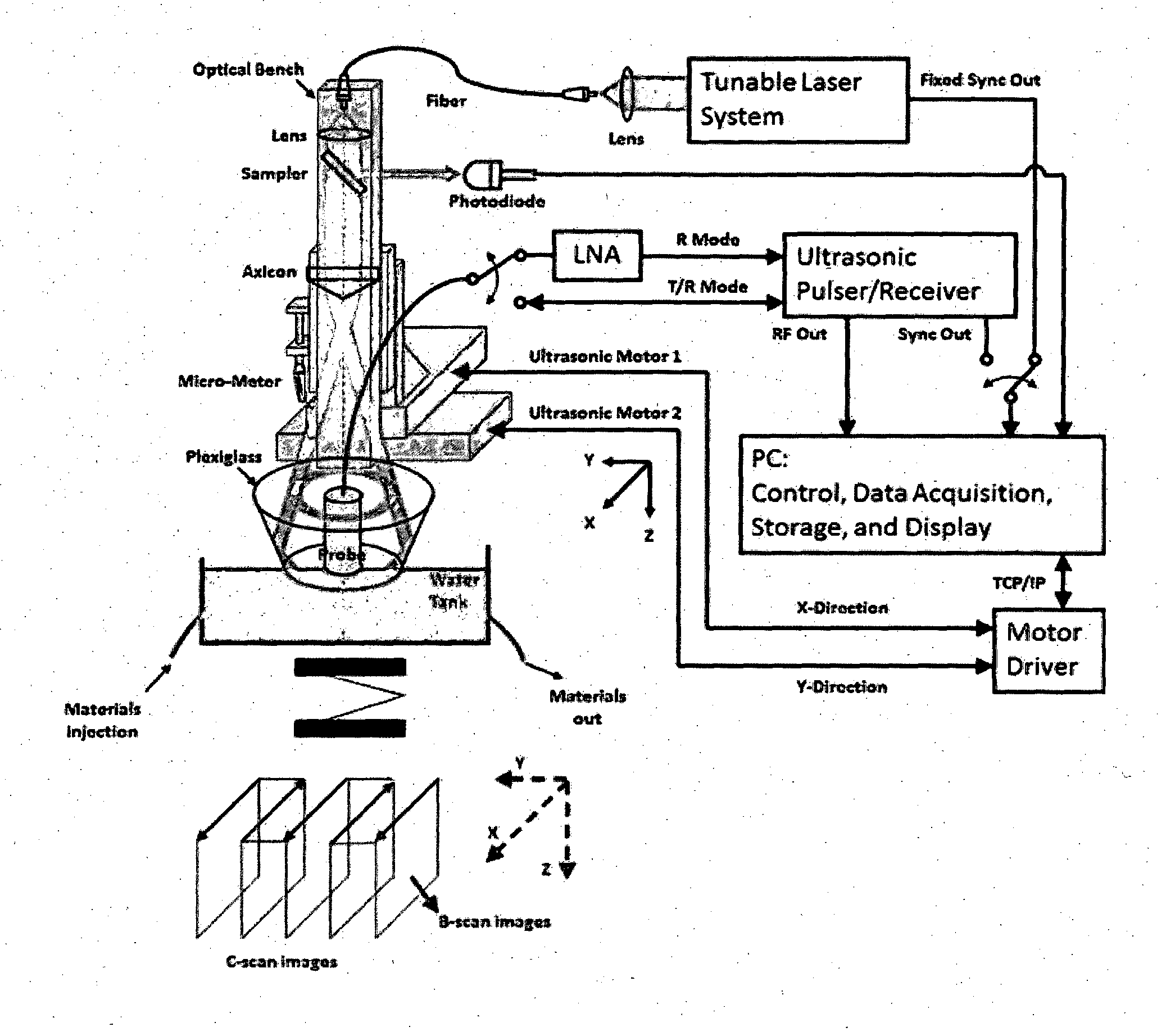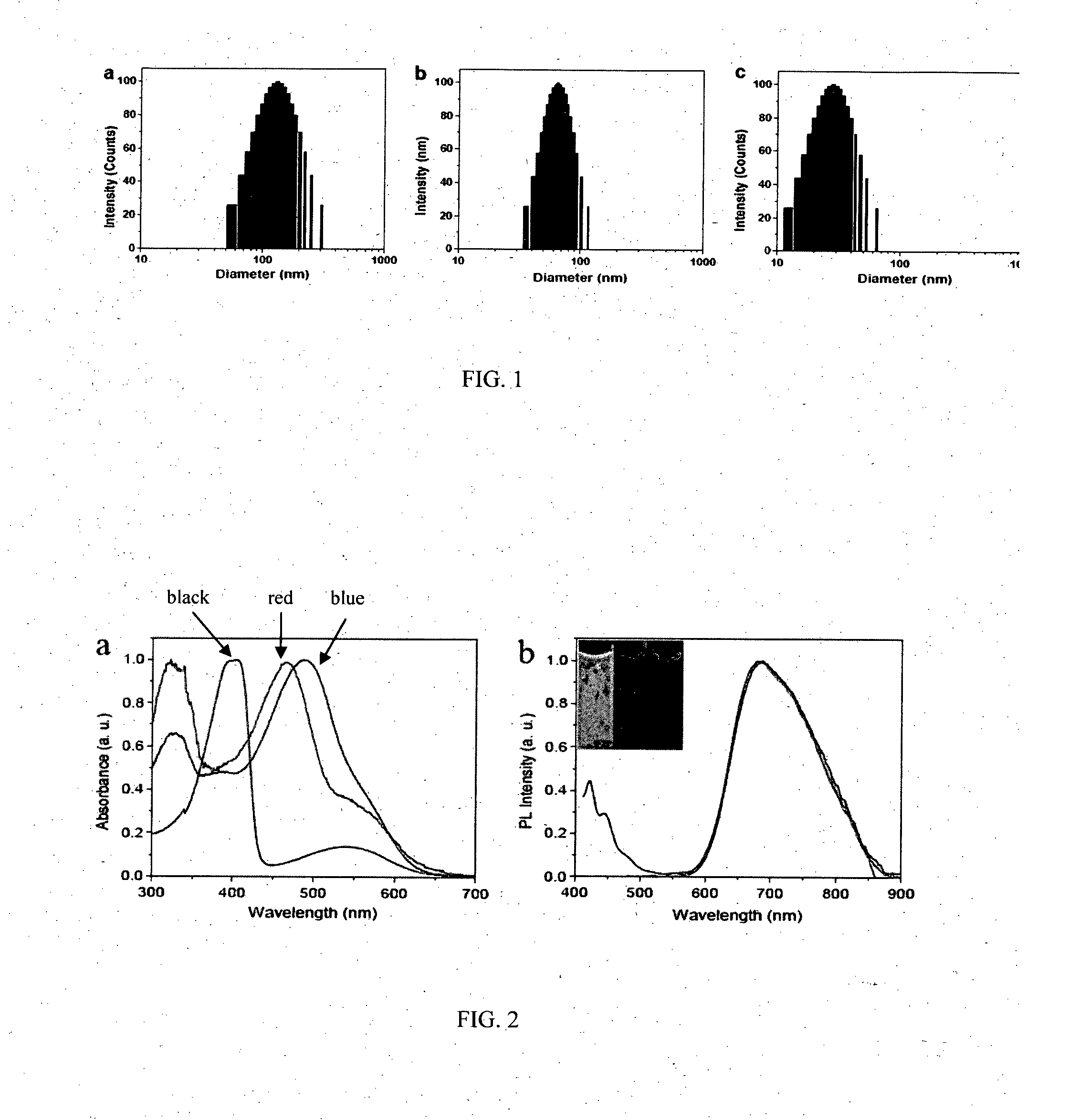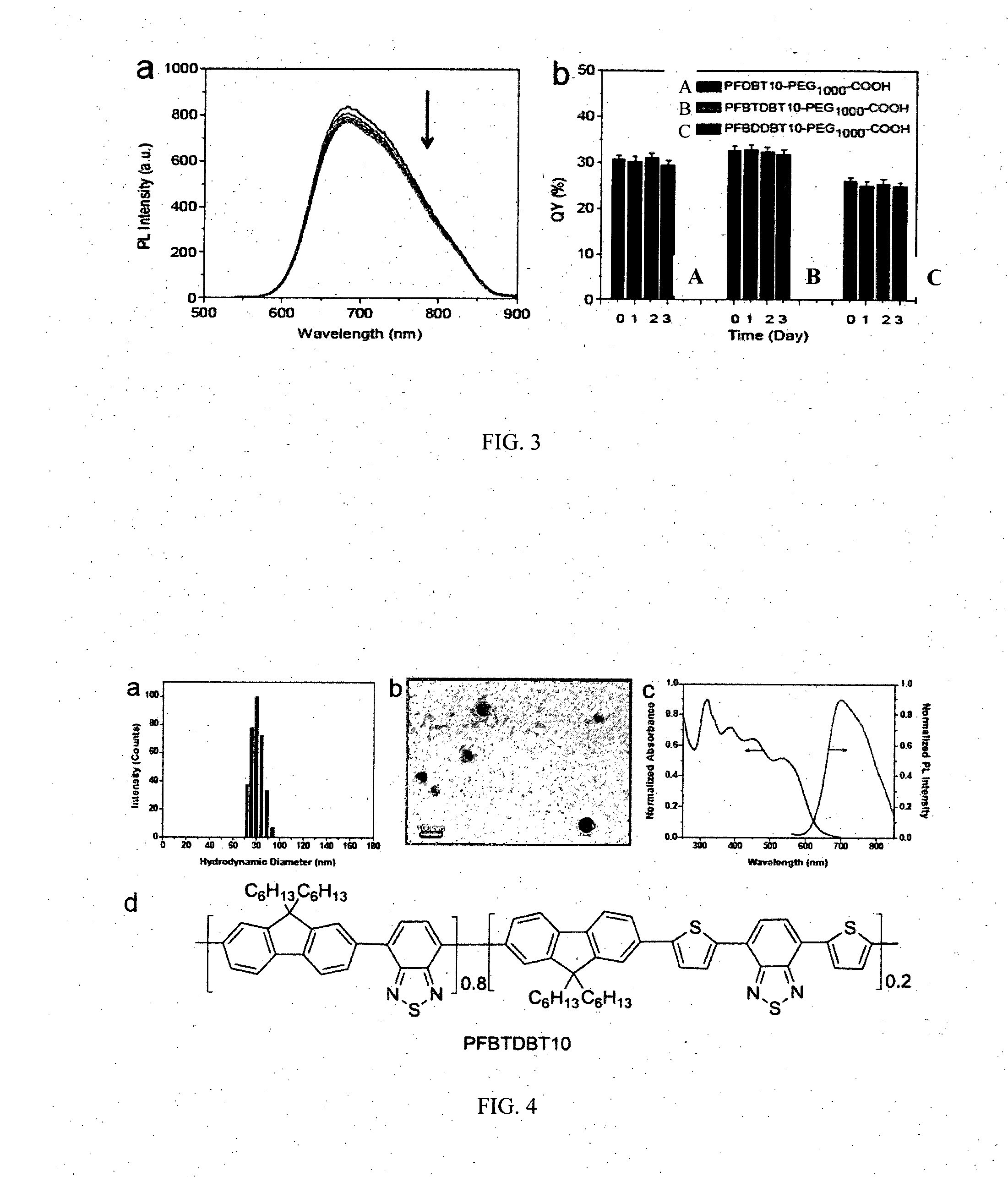Highly Emissive Far-Red/Near-Infrared Fluorescent Conjugated Polymer-Based Nanoparticles
a polymer-based nanoparticle, near-infrared technology, applied in the direction of textiles, paper, peptides, etc., can solve the problems of limited molar absorption, poor photostability, limited the scope of biological applications of the nanoparticle,
- Summary
- Abstract
- Description
- Claims
- Application Information
AI Technical Summary
Benefits of technology
Problems solved by technology
Method used
Image
Examples
example 1
Representative Synthetic Procedure for Low Molecular Weight Conjugated Molecules
[0101]To a solution of 4,9-bis(5-bromothiophen-2-yl)-6,7-bis(4-(hexyloxy)phenyl)-[1,2,5]thiadiazolo[3,4-g]quinoxaline (86.0 mg, 0.1 mmol), 1-(4-(4,4,5,5-tetramethyl-1,3,2-dioxaborolan-2-yl)phenyl)-1,2,2-triphenylethylene (114.5 mg, 0.25 mmol), Pd(PPh3)4 (11.5 mg, 0.01 mmol) and tetrabutylammonium bromide (32.2 mg, 0.01 mmol) in toluene (15 mL) was added K2CO3 aqueous solution (2 M, 5 mL). The reaction was performed at 90° C. for 24 h under argon atmosphere. After removing the solvent, the residua was purified through silica gel column chromatography using hexane / dichloromethane (7 / 3) as eluent to afford 6,7-bis(4-(hexyloxy)phenyl)-4,9-bis(5-(4-(1,2,2-triphenylvinyl)phenyl)thiophen-2-yl)-[1,2,5]thiadiazolo[3,4-g]quinoxaline as black solid (98.2 mg, yield: 72%). Each compound shown in Scheme 1 was made by the analogous procedure.
Example 2
Synthesis of Conjugated Polymer CP-1
[0102]
A Schlenk tube was charged ...
example 2
Self-Assembly of CP-Based Nanoparticles in Water
[0121]A set of PFBDDBT10-PEG1000-COOH NPs were prepared by adding 2 mL of DMSO containing CP with concentration of 0.5, 0.25 and 0.17 mg / mL into 10 mL of Milli-Q water, respectively. FIG. 1 shows the laser light scattering (LLS) results of PFBDDBT-PEG1000-COOH in water with different CP feeding concentrations. As shown, the particle size decreases from 116 nm to 28 nm with decreasing the CP concentration in DMSO, indicating that the size of CP NPs can be controlled by fabrication procedures.
example 3
Spectroscopy of CP-Based Nanoparticles in Water
[0122]FIG. 2 shows the UV-vis and PL spectra of PFDBT-PEG1000-COOH, PFBTDBT-PEG1000-COOH and PFBDDBT-PEG1000-COOH NPs in water, respectively. Although the three CP NPs exhibit different absorption spectra, they show almost identical PL spectra centered at 680 nm. This is because that they have the same NBG2 unit of the vicinity of 4,7-di(thiophen-2-yl)-2,1,3-benzothiadiazole (DBT) units. The emission spectra extend very broad from 550 to 900 nm, and most are located in NIR region. Furthermore, the NPs have large Stokes shift from 192 to 277 nm, which minimizes the interference between the absorption and emission spectra. The PL spectra of the NPs match the confocal laser scanning microscope (CLSM) with 650 nm long-pass barrier filter for signal collection. The quantum yields of PFDBT-PEG1000-COOH, PFBTDBT-PEG1000-COOH and PFBDDBT-PEG1000-COOH in water were measured to be 30±1%, 32±1% and 25±1%, respectively, and 46±1%, 59±1% and 45±1% i...
PUM
| Property | Measurement | Unit |
|---|---|---|
| Fluorescence | aaaaa | aaaaa |
Abstract
Description
Claims
Application Information
 Login to View More
Login to View More - R&D
- Intellectual Property
- Life Sciences
- Materials
- Tech Scout
- Unparalleled Data Quality
- Higher Quality Content
- 60% Fewer Hallucinations
Browse by: Latest US Patents, China's latest patents, Technical Efficacy Thesaurus, Application Domain, Technology Topic, Popular Technical Reports.
© 2025 PatSnap. All rights reserved.Legal|Privacy policy|Modern Slavery Act Transparency Statement|Sitemap|About US| Contact US: help@patsnap.com



